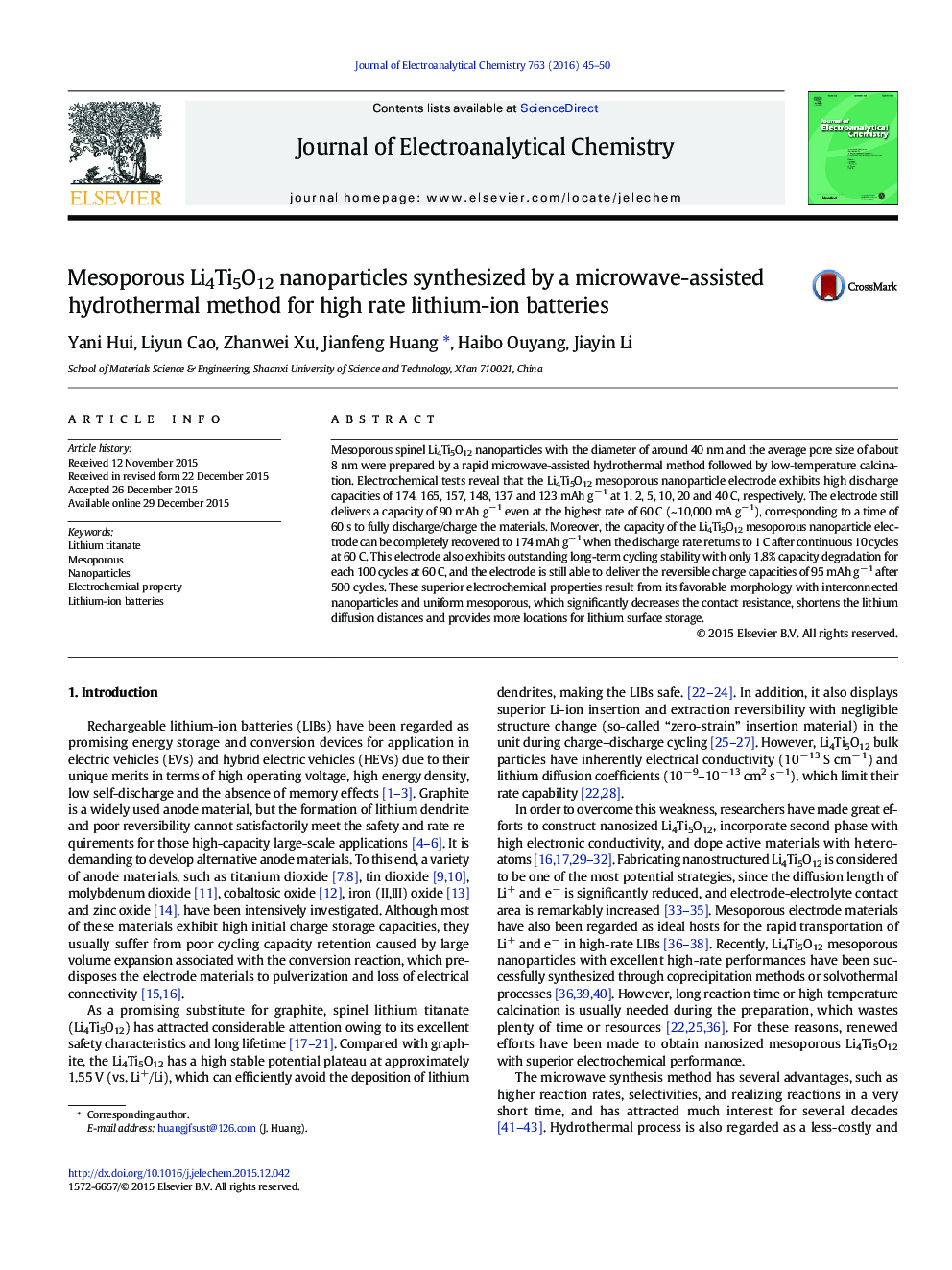| کد مقاله | کد نشریه | سال انتشار | مقاله انگلیسی | نسخه تمام متن |
|---|---|---|---|---|
| 218107 | 463183 | 2016 | 6 صفحه PDF | دانلود رایگان |

• Spinel Li4Ti5O12 mesoporous nanoparticles were synthesized by a rapid microwave-assisted hydrothermal method.
• This electrode delivers high discharge capacities of 174, 165, 157, 148, 137, 123 and 60 mAh g− 1 at 1, 2, 5, 10, 20, 40 and 60 C (~ 10,000 mA g− 1), respectively.
• These superior electrochemical properties result from its favorable morphology.
Mesoporous spinel Li4Ti5O12 nanoparticles with the diameter of around 40 nm and the average pore size of about 8 nm were prepared by a rapid microwave-assisted hydrothermal method followed by low-temperature calcination. Electrochemical tests reveal that the Li4Ti5O12 mesoporous nanoparticle electrode exhibits high discharge capacities of 174, 165, 157, 148, 137 and 123 mAh g− 1 at 1, 2, 5, 10, 20 and 40 C, respectively. The electrode still delivers a capacity of 90 mAh g− 1 even at the highest rate of 60 C (~ 10,000 mA g− 1), corresponding to a time of 60 s to fully discharge/charge the materials. Moreover, the capacity of the Li4Ti5O12 mesoporous nanoparticle electrode can be completely recovered to 174 mAh g− 1 when the discharge rate returns to 1 C after continuous 10 cycles at 60 C. This electrode also exhibits outstanding long-term cycling stability with only 1.8% capacity degradation for each 100 cycles at 60 C, and the electrode is still able to deliver the reversible charge capacities of 95 mAh g− 1 after 500 cycles. These superior electrochemical properties result from its favorable morphology with interconnected nanoparticles and uniform mesoporous, which significantly decreases the contact resistance, shortens the lithium diffusion distances and provides more locations for lithium surface storage.
Figure optionsDownload as PowerPoint slide
Journal: Journal of Electroanalytical Chemistry - Volume 763, 15 February 2016, Pages 45–50